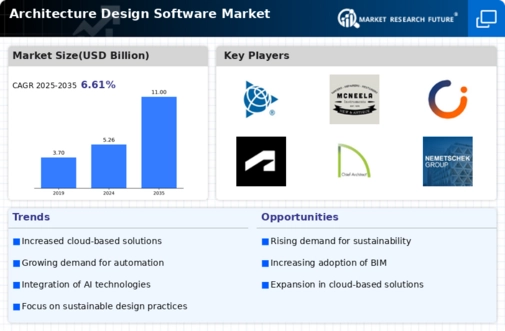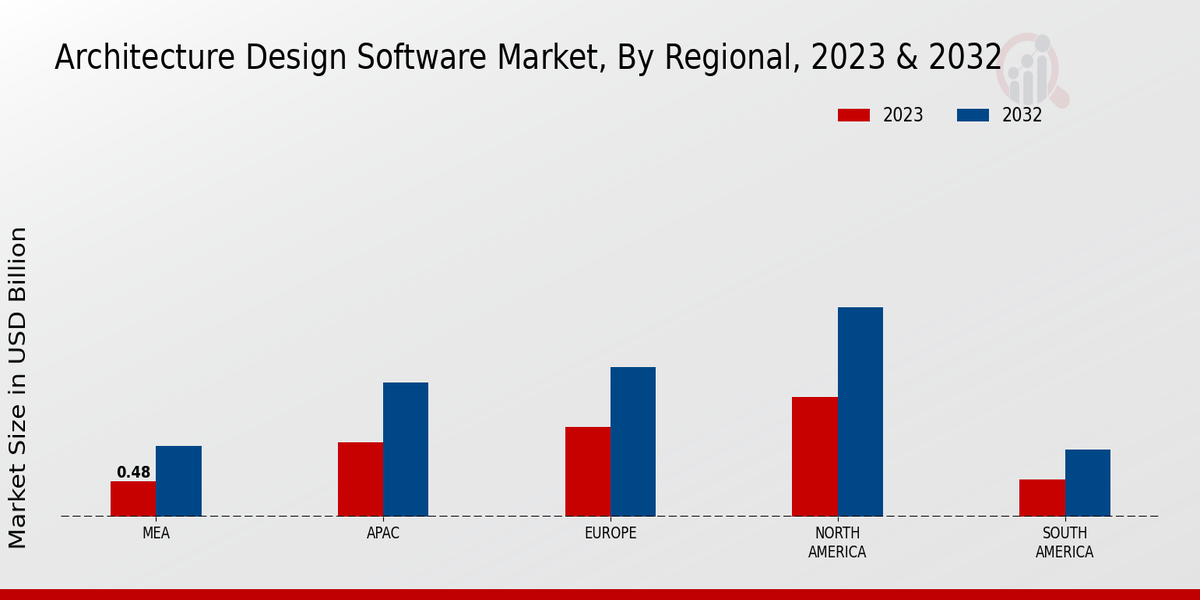Market Growth Charts
Increased Urbanization
Urbanization is a key driver impacting the Global Architecture Design Software Market Industry. As populations migrate towards urban centers, the demand for innovative architectural solutions rises. This phenomenon necessitates efficient design software capable of addressing the complexities of urban environments, such as space optimization and infrastructure development. The increasing number of smart city projects globally further fuels this demand, as architects seek tools that can integrate technology into urban planning. Consequently, the market is expected to witness a compound annual growth rate of 6.91% from 2025 to 2035, reflecting the growing need for advanced design capabilities in urban settings.
Technological Advancements
The Global Architecture Design Software Market Industry experiences robust growth driven by rapid technological advancements. Innovations in artificial intelligence, machine learning, and cloud computing enhance design capabilities, enabling architects to create more complex and efficient structures. For instance, AI-driven design tools can analyze vast datasets to optimize building performance and sustainability. As a result, the market is projected to reach 5.26 USD Billion in 2024, reflecting a growing reliance on sophisticated software solutions. These advancements not only streamline workflows but also improve collaboration among stakeholders, which is crucial in a globalized architecture landscape.
Global Infrastructure Development
The Global Architecture Design Software Market Industry is significantly influenced by ongoing infrastructure development projects worldwide. Governments and private sectors are investing heavily in infrastructure to support economic growth and improve living standards. This investment drives the need for advanced architectural design software that can manage large-scale projects efficiently. For example, software that facilitates collaboration among various stakeholders and integrates project management features is increasingly sought after. As infrastructure projects expand globally, the market is poised for substantial growth, with projections indicating a potential market size of 11.0 USD Billion by 2035, highlighting the software's critical role in modern construction.
Rising Demand for Sustainable Design
Sustainability has become a pivotal focus within the Global Architecture Design Software Market Industry. Architects and designers increasingly prioritize eco-friendly practices, leading to a surge in demand for software that supports sustainable design principles. Tools that facilitate energy-efficient building designs and materials selection are gaining traction. This trend is further supported by government regulations promoting green building initiatives worldwide. As sustainability becomes a standard expectation, the market is anticipated to grow significantly, potentially reaching 11.0 USD Billion by 2035. This shift underscores the importance of integrating sustainability into architectural practices through advanced software solutions.
Growing Adoption of Building Information Modeling (BIM)
The adoption of Building Information Modeling (BIM) is transforming the Global Architecture Design Software Market Industry. BIM technology allows architects to create detailed 3D models that enhance visualization and collaboration throughout the design process. This shift towards digital modeling improves accuracy and reduces errors, leading to cost savings and more efficient project delivery. As more firms recognize the benefits of BIM, its integration into architectural practices is accelerating. This trend is likely to contribute to the market's growth trajectory, with a projected CAGR of 6.91% from 2025 to 2035, as firms increasingly invest in advanced software solutions to remain competitive.














